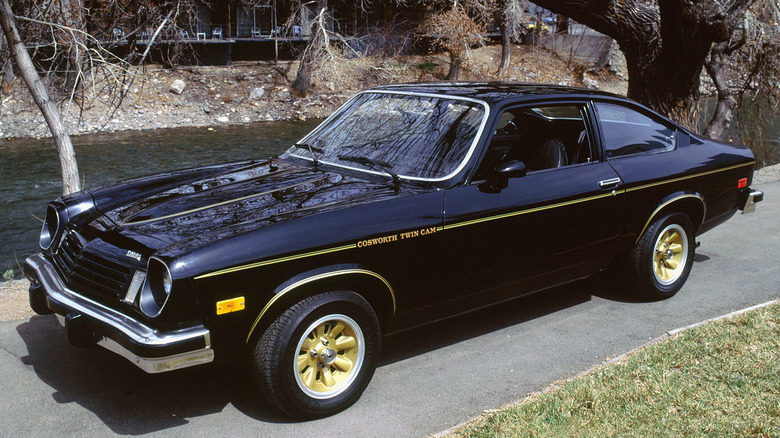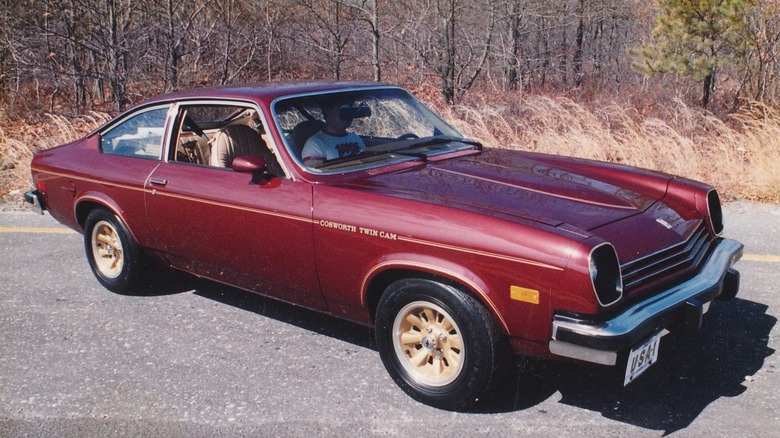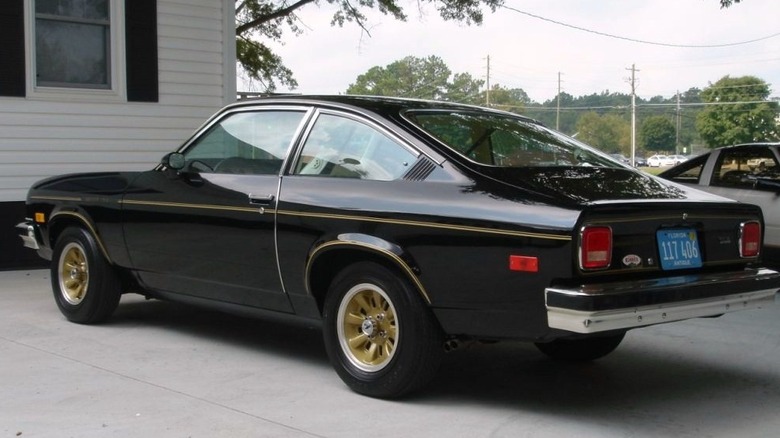Chevy Cosworth Vega: The Little-Known American Challenger To European Sports Cars
Chevrolet's Vega was named after one of the brightest stars in the night sky and indeed, the brand was betting heavily that its new subcompact would become a star in the sales showroom, competing against an ever-growing wave of imports. The Vega was a success at the onset, largely due to its good looks and sporty, balanced handling, but buyers soon grew vocal about the car's numerous shortcomings, causing purchases to slide. Body rust was a major issue, as were fuel tank fires and an aluminum engine block that was prone to warping from heat.
In response, Chevrolet's then-general manager John Z. DeLorean had the notion that a high-performance version of the Vega might boost the car's flagging sales, so he reached out to Formula 1 racing supplier Cosworth Engineering in England. General Motors and Cosworth had already collaborated on a racing version of the Vega's inline four-cylinder engine which was very powerful, but also very unreliable. This time around, Cosworth was instructed to detune the racing engine to the point where it would be suitable for street driving, and the Cosworth Vega was born.
Rather than emphasize brute horsepower, the Cosworth Vega was intended as a more balanced sports car in line with those imported from Europe. Based on a 1973 press release from GM, Car and Driver gushed that the CV would be "a taut-muscled GT coupe to devastate the smugness of BMW 2002tii's and five-speed Alfa GTVs ... each one built away from the tumult of the assembly line to precision tolerances, as a show of technical force by Chevrolet."
The Cosworth engine was a sign of the times
The Cosworth Vega's engine block was quite similar to a standard Vega, but with a shorter stroke (the distance a piston travels in a cylinder) to rev higher and build that rpm more quickly. Cosworth's largest contribution to the cause was likely the engine's twin-cam, 16-valve (four valves per cylinder) aluminum cylinder head, mated to a Bendix electronic fuel injection setup — a first for a GM production car — that replaced the racing engine's finicky mechanical fuel injection.
Unfortunately, the Cosworth Vega (CV) was developed concurrent with America's transition to lower octane unleaded gasoline, so the engine's compression ratio was gradually reduced until it arrived at the low-lead-friendly figure of 8.5:1. When the production CV hit the market for the 1975 model year, it did so with its much-anticipated 16-valve engine making only 110 horsepower and 107 ft-lbs of torque. In a Road and Track test, the CV recorded a pathetic zero to 60 mph time of 12.3 seconds. Measuring the standing 1/4 mile time might have required a calendar instead of a stopwatch.
[Featured image by Vegavairbob via Wikimedia Commons | Cropped and scaled | CC BY-SA 3.0]
It was just too expensive
If nothing else, journalists remarked that the Cosworth Vega was a good handling car — like the Vega GT on which it was based — and also fun to drive. For the 1975 model year, the CV was only offered in black with gold trim, a color scheme that would become immensely popular in the following years on cars like Pontiac's Trans-Am.
For 1976, the Cosworth Vega gained seven additional exterior colors, along with better rustproofing. Mechanically, the CV's manual transmission went from four speeds to an optional five-speed and the rear axle had a lower gear ratio for better acceleration. Nonetheless, it was a case of too little, too late. The CV sold only 2,601 units in 1975 and a scant 1,447 examples in 1976. Not surprisingly, the CV was killed after the 1976 model year and for that matter, the entire Vega lineup was axed after 1977. Several factors contributed to the CV's lack of success. Its performance never lived up to the high expectation set forth by GM management, not to mention that the car on which it was based was highly flawed.
That aside, the biggest failure point was its price. The CV was originally intended to retail for approximately $4,000, but the production car arrived with a base price of $6,065 including freight, which was almost double the cost of a basic Vega and only $800 less than a brand-new 1975 Corvette coupe. Though rare, the Cosworth Vega is still an affordable indulgence nowadays, with an average selling price of $21,806 over the past 12 months.
[Featured image by Barnstarbob via Wikimedia Commons | Cropped and scaled | CC BY-SA 3.0]


